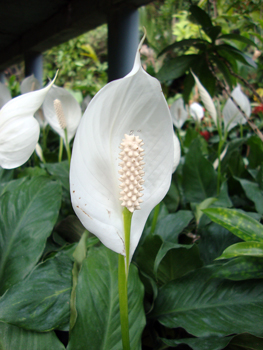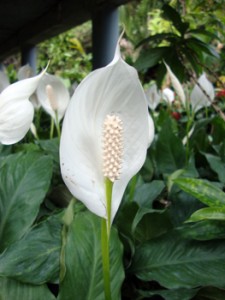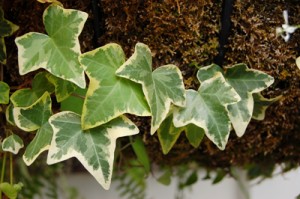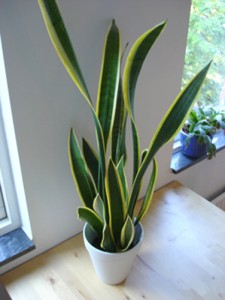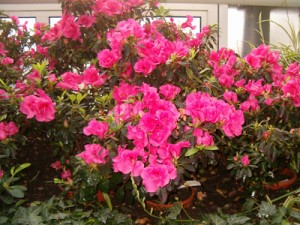Purify Your Indoor Air With These 10 Easy-Care Houseplants
September 2-2013
Did you know that indoor air is generally more polluted than outdoor air? That’s right. Indoor air has a higher concentration of gases and particulates, due to inadequate ventilation and a variety of pollution sources inside the home like cleaning products and pressed wood furniture. Since people typically spend at least 80% of their time indoors, this is being recognized as a serious threat to people’s health.
The best way to combat indoor air pollution is to open windows and doors when possible and to minimize products that emit toxic pollutants. Another way is to bring nature inside for some help. Besides being beautiful and relaxing, houseplants are effective at removing ozone and Volatile Organic Compounds (VOCs) which make up a large portion of indoor air pollution.
Here are 10 easy-care houseplants to help you live a healthier life.
Peace lily (Spathiphyllum wallisii). Removes formaldehyde, benzene and trichloroethylene. Native to the rainforests of central and south American, this plant needs a shady spot.
Golden pothos (Scindapsus aures). Removes formaldehyde. A very tough vine that grows to massive proportions in its native habitat. In the home it prefers bright, indirect light and moist soil.
Purify Your Indoor Air With These 10 Easy-Care Houseplants
Did you know that indoor air is generally more polluted than outdoor air? That’s right. Indoor air has a higher concentration of gases and particulates, due to inadequate ventilation and a variety of pollution sources inside the home like cleaning products and pressed wood furniture. Since people typically spend at least 80% of their time indoors, this is being recognized as a serious threat to people’s health.
The best way to combat indoor air pollution is to open windows and doors when possible and to minimize products that emit toxic pollutants. Another way is to bring nature inside for some help. Besides being beautiful and relaxing, houseplants are effective at removing ozone and Volatile Organic Compounds (VOCs) which make up a large portion of indoor air pollution.
Here are 10 easy-care houseplants to help you live a healthier life.
Peace lily (Spathiphyllum wallisii). Removes formaldehyde, benzene and trichloroethylene. Native to the rainforests of central and south American, this plant needs a shady spot.
Golden pothos (Scindapsus aures). Removes formaldehyde. A very tough vine that grows to massive proportions in its native habitat. In the home it prefers bright, indirect light and moist soil.
English ivy (Hedera helix). Removes formaldehyde. This pretty vine is a bit more difficult to grow, preferring cool, moist and humid conditions which are not typical of a home.
Chrysanthemum (Chrysanthemum morifolium). Removes benzene and formaldehyde. Can produce colorful flowers when placed in direct sunlight.
Gerbera daisy (Gerbera jamesonii). Removes benzene and trichloroethylene. Like the chrysanthemum, it needs direct sunlight to produce its pretty flowers.
Mother-in-law’s tongue (Sansevieria trifasciata ‘Laurentii’). Removes formaldehyde. A striking, low-maintenance plants that thrives in low light and more humid conditions.
Bamboo palm (Chamaedorea sefritzii). Removes benzene, formaldehyde and trichloroethylene. This popular houseplant thrives in low light but cannot withstand overwatering.
Mother-in-law’s tongue (Sansevieria trifasciata ‘Laurentii’). Removes formaldehyde. A striking, low-maintenance plants that thrives in low light and more humid conditions.
Bamboo palm (Chamaedorea sefritzii). Removes benzene, formaldehyde and trichloroethylene. This popular houseplant thrives in low light but cannot withstand overwatering.
